Sourdough English Muffins
Sourdough English Muffins are surprisingly easy to make and soooo much better than store bought. The active starter in the dough makes the flavor and texture extra special. The recipe takes several hours, but there is very little hands-on time. Stock up the freezer for future breakfasts.
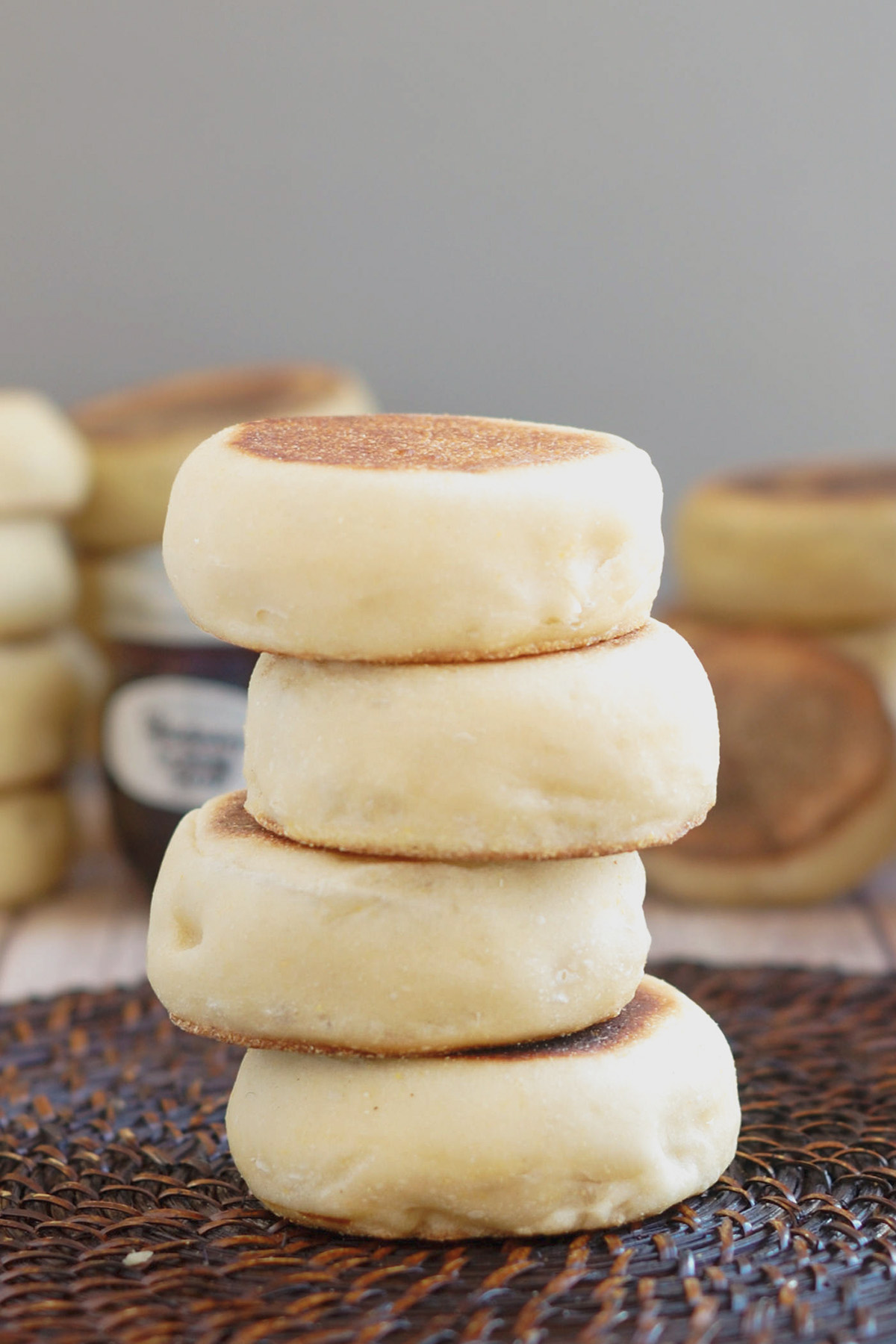
Table of contents
About this recipe
English Muffins are always toasted before eating. So use your starter to make Sourdough English Muffins for a later date. This is a perfect “make ahead and freeze” recipe.
If you don’t already have one, I can show you how to make a sourdough starter and how to feed a sourdough starter.
Ingredients
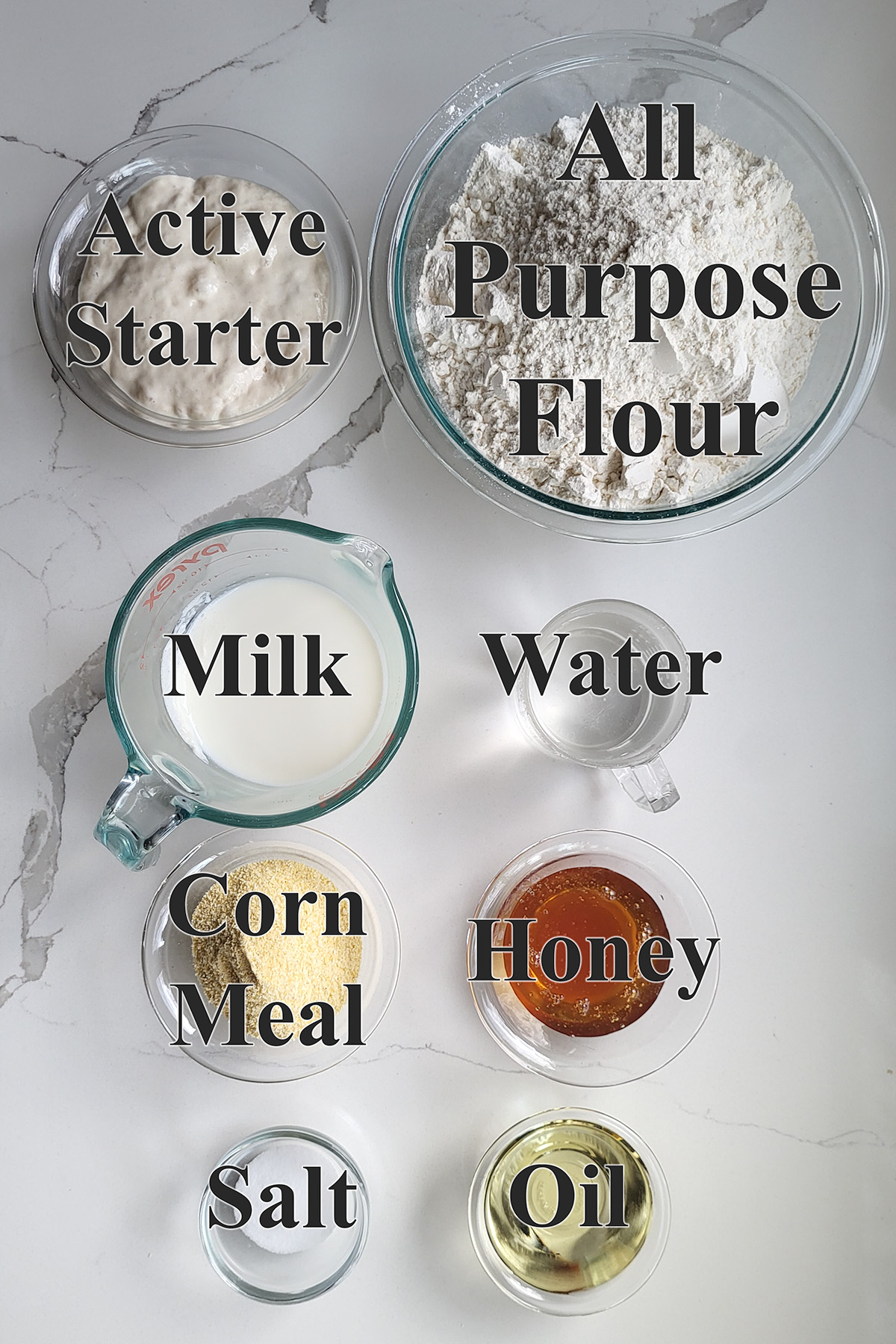
Ingredient Notes
- Sourdough Starter – The recipe was developed using 100% hydration starter. If your starter has a different hydration percentage you will need to adjust the amount of water or flour in the recipe.
- Unbleached All Purpose Flour – Medium content all purpose flour makes a dough with enough gluten for the muffins to rise. You may replace a cup of the all purpose flour with whole wheat or rye flour for whole grain flavor.
- Honey – You can substitute 1/4 cup (2 oz) of granulated sugar if you don’t have honey.
- Corn Meal – Rolling the dough on cornmeal gives the muffins the classic cornmeal dusted bottom crust. You can use flour for rolling if you don’t have cornmeal.
Process Photos
See the recipe card for detailed measurements and instructions.
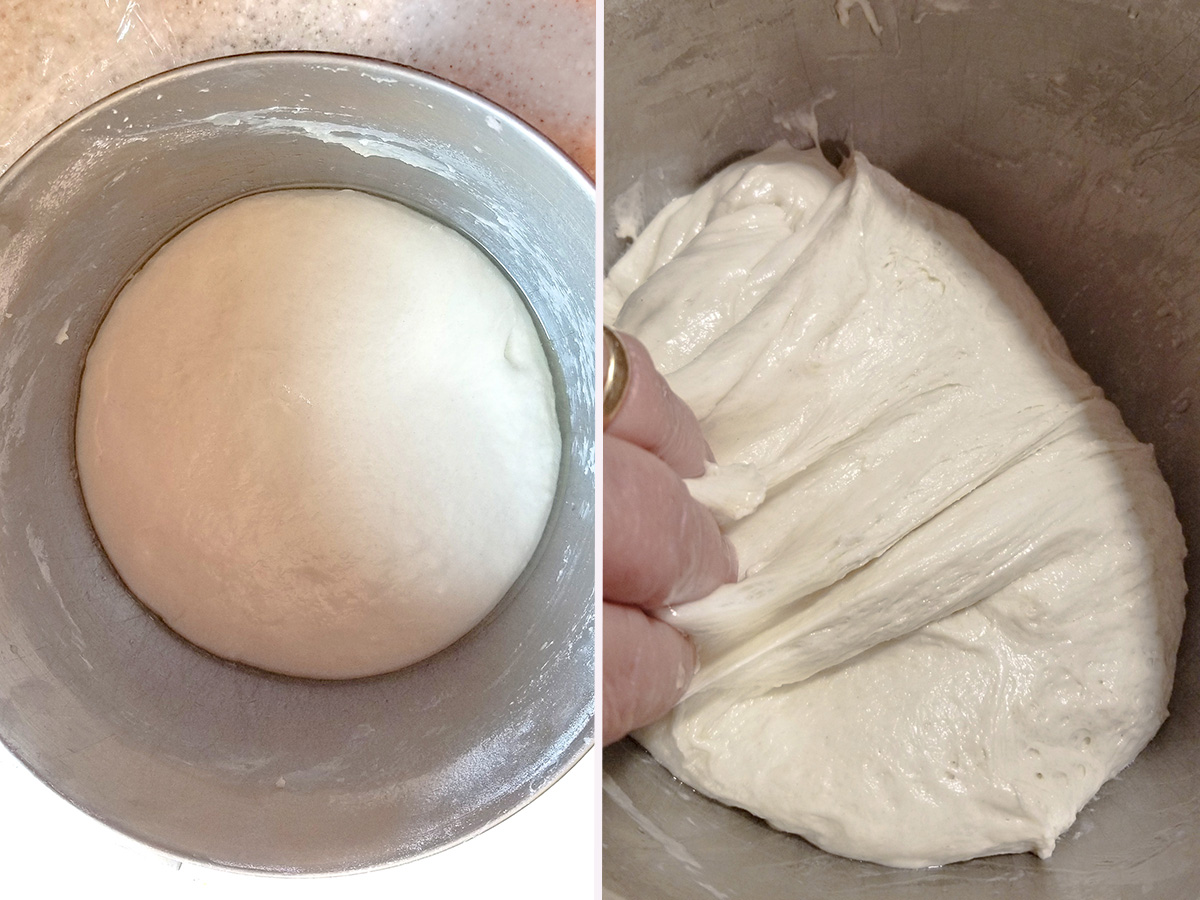
- After the dough is mixed set it aside at room temperature to ferment.
- Every hour fold the dough to develop the gluten and redistribute the yeast.
- The dough is ready when it is lively, light and elastic. This should take 3-5 hours.
- At this point the dough can be refrigerated for up to 2 days or you can proceed with cutting the muffins.
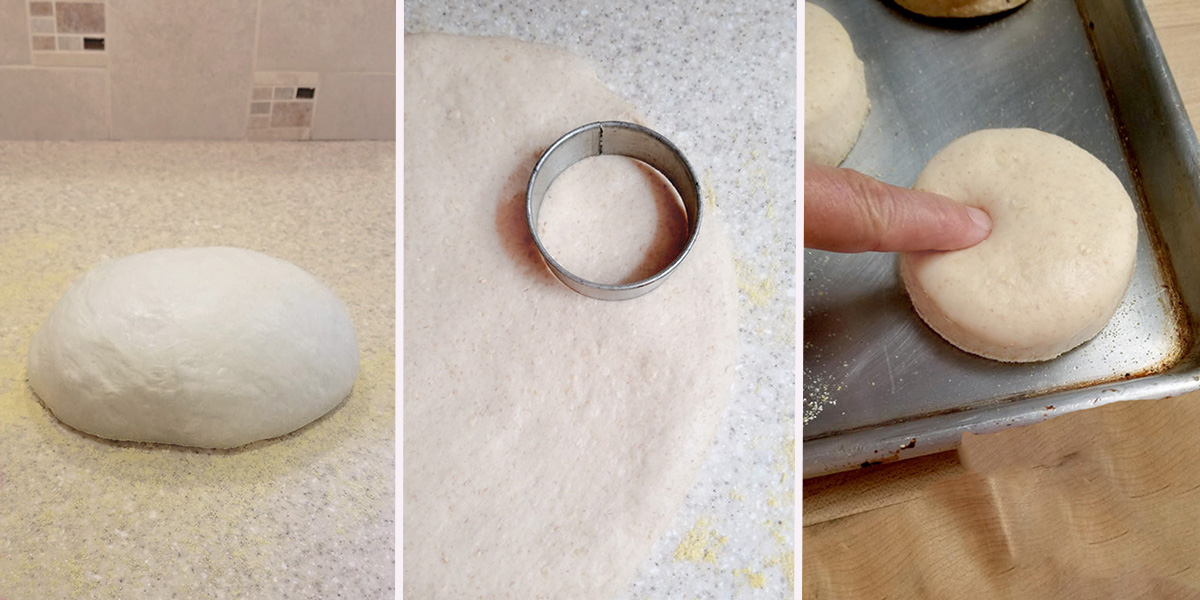
- Roll the dough to 1/2″ thick on a cornmeal dusted surface.
- Cut the muffins using a 3 – 3 1/2″ cutter. Line the muffins on a sheet pan. At this point you can wrap the tray and refrigerate overnight to bake the next day.
- Allow the muffins to rise for 1-2 hours. The rise time will vary depending on the temperature of the dough and the ambient temperature in the room.
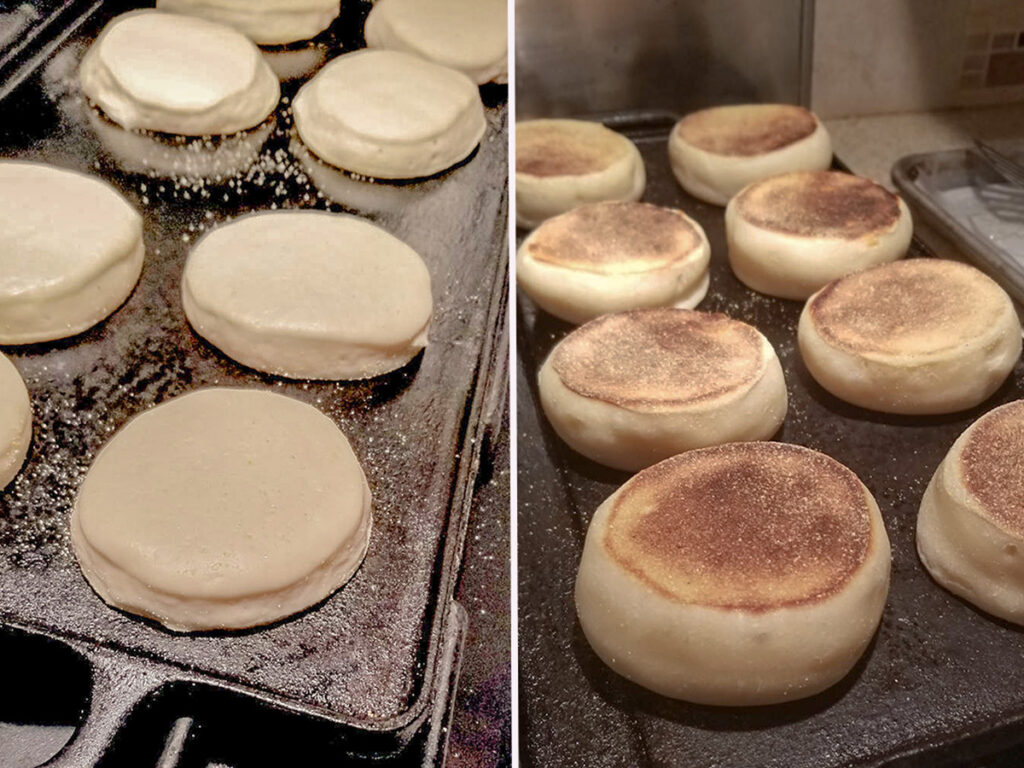
- Preheat a cast iron griddle or skillet over medium high heat.
- Set the muffins, cornmeal side down, on the pan. Leave 1″ space between muffins. Cook until the muffins rise up, brown on the bottom and the sides are mostly set, about 6-8 minutes. Adjust the heat as needed to keep a constant temperature.
- Flip the muffins and bake until the other side is golden brown and the sides are set, also about 6-8 minutes.

- Completely cool the muffins on a rack before packing into a freezer bag.
How to Serve Sourdough English Muffins
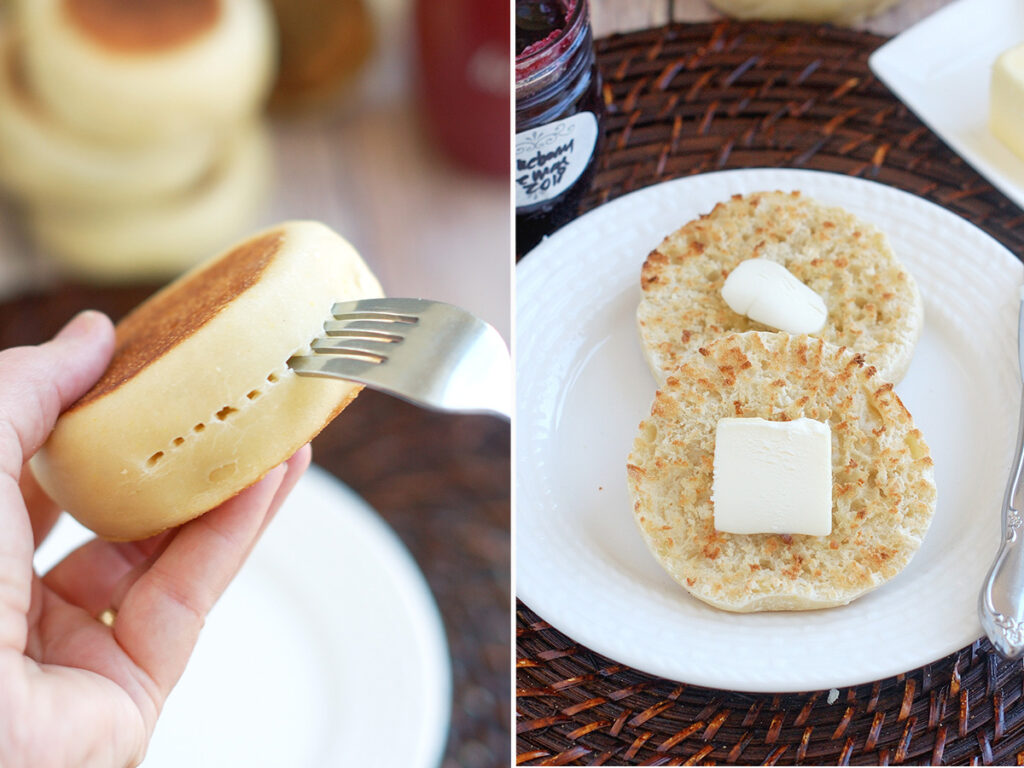
- Sourdough English Muffins should always be toasted before serving.
- To get the best texture don’t slice it with a knife! Use a fork to split the muffin.
- Fork-splitting forms the “nooks and crannies” that hold lots of melted butter.
Storage
- Fresh Sourdough Muffins will keep at room temperature for one day.
- For longer storage, pack the muffins into freezer bags and freeze up to 3 months.
- Microwave a frozen muffin for 10 to 20 seconds. Fork split the muffin, toast and serve.
I know you hate to throw away that sourdough discard. Check out these recipes that use sourdough discard.
More Sourdough Recipes:
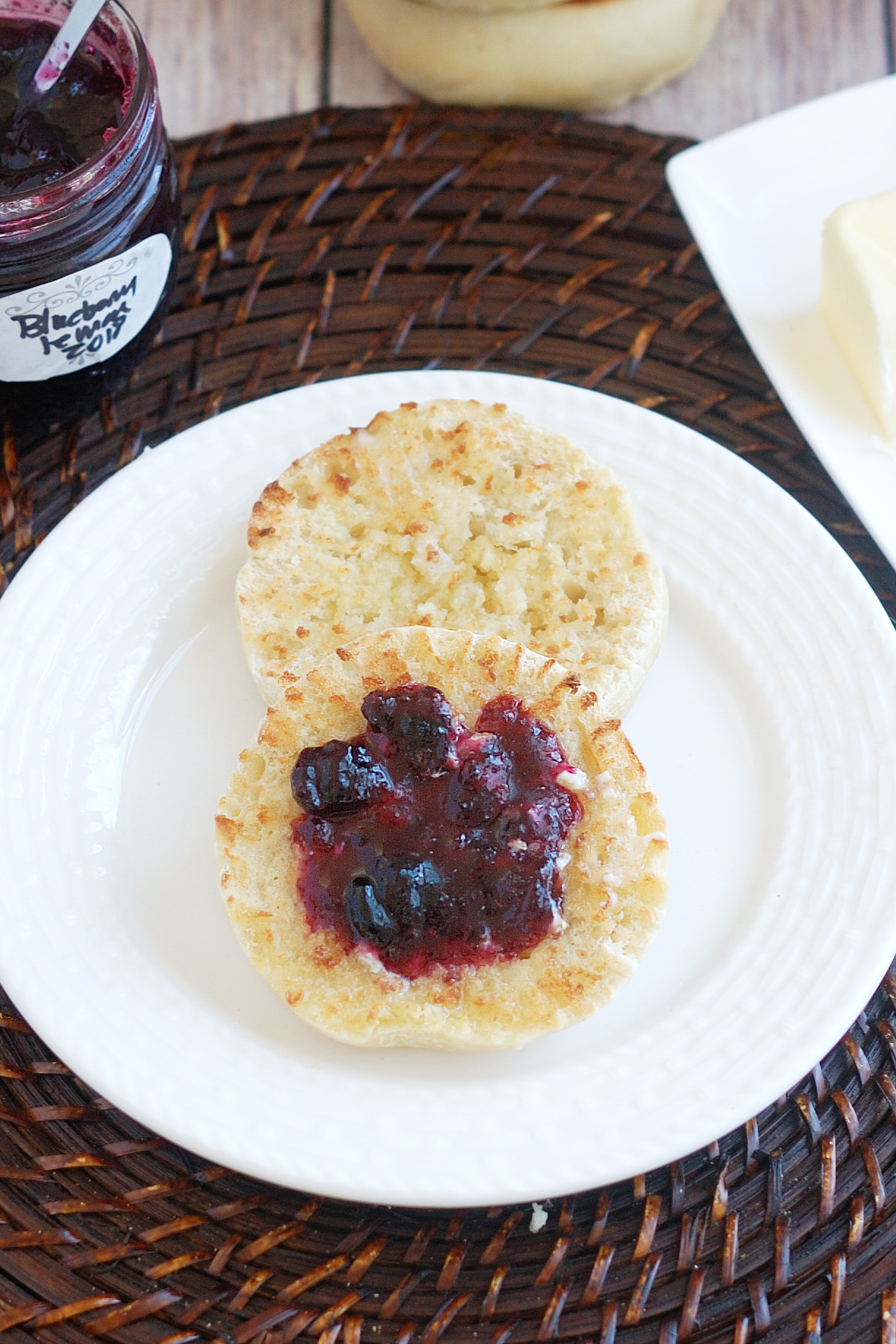
If you love this recipe as much as I do, please leave a 5-star review.
Sourdough English Muffin Recipe
Ingredients
- 8 oz active sourdough starter (1 cup, 100% hydration)
- 6 oz warm water (¾ cup)
- 8 oz whole milk (1 cup, scalded and cooled.)
- 25 oz unbleached all-purpose flour (5 cups, see note)
- 3 oz honey (¼ cup)
- 2 oz vegetable oil (¼ cup)
- 2 teaspoons salt
- cornmeal (for rolling)
Instructions
- Combine 8 oz active sourdough starter, 6 oz warm water, 8 oz whole milk and 2 cups (10 oz) of the flour in the bowl of a stand mixer or a large mixing bowl. Mix on low speed until combined. Cover the bowl and set aside for 30 minutes.
- Add 3 oz honey, 2 oz vegetable oil and 2 teaspoons salt and mix to combine. Switch to the dough hook if using a stand mixer. Add the remaining 3 cups (15 oz) flour and knead about 5 minutes or until the dough clears the sides of the bowl and clings to the hook. If mixing by hand, add flour until you can no longer stir, then turn the dough out onto a floured surface to finish by hand.
- Transfer the dough to a lightly oiled bowl, turning once to coat the dough. Cover the bowl and set it aside at room temperature. After 60 minutes uncover the bowl, lift one side of the dough over into the middle of the dough. Repeat with the other three sides of the dough then flip the dough over. Cover the bowl and after 60 minutes repeat the procedure. Cover the bowl and after 60 minutes repeat the procedure one last time. By now the dough should be lively, elastic and airy. If the dough is still sluggish give it another hour or two at room temperature. At this point the dough can be refrigerated for up to 2 days.
- Turn the dough from the bowl and knead briefly to form a smooth ball. Lightly sprinkle your work surface with cornmeal. Roll the dough to 1/2” thick. Cut muffins with a 3” biscuit cutter. Reroll the scraps and continue cutting until all the dough is used. You should get about 16 muffins. Place the muffins on an ungreased baking sheet. Cover the pan. (At this point the muffins can be refrigerated overnight and baked in the morning or continue to finish the muffins the same day.) Let the muffins rise until almost doubled in volume, about 1 hour.
- Preheat a griddle or cast-iron pan over medium-high heat. Reduce the heat to medium-low. Set the muffins, cornmeal side down in the pan. Place as many muffins as will fit in the pan with a 1" space between. "Bake" the muffins for about 6-8 minutes until the bottom is deep golden brown. Flip the muffins and bake until the other side is nicely browned. Keep an eye on the heat so the muffins don't burn. Adjust the heat as needed. Cool on wire rack. To serve, split and toast.
Would you like to save this recipe?
As an Amazon Associate and member of other affiliate programs, I earn from qualifying purchases.



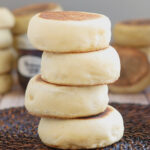





Why not autolyse the 5 cups of flour instead of just 2?
Can we just chuck the stuff in a bread maker set to dough and let it rip?
Why the all purpose flour and not bread flour?
Is gluten formation important for muffins?
These look delicious! Wondering if you have to use cornmeal or if there is something I can substitute since my wife has a sensitivity to corn? Thanks!
Yes, semolina would work or just use more flour.
When you say, in quotation marks, to “BAKE” the muffins, does that mean put the muffins on a griddle on top of the stove, or bake them in the oven? If in the oven, at what temperature. The quotation “BAKE” direction has me completely confused
Yes, I put “bake” in quotes because they are not actually going into the oven but on the griddle. The word “cook” just seemed wrong too.
Choose this recipe from a bunch On the Internet because of all the additional information and the photos. These English muffins could not have turned out better. This is a recipe that I’m going to use again thank you so much. Would you please let me know if you have an Instagram account I would like to tag it in the photos of my English muffins which are definitely not pro but I really would like to add that information to my Instagram post thank you so much
Thanks, Michele. I’m glad you appreciate the extra information and photos. I think of my website as a place to teach so I give as much information as possible. I do have an Instagram account, @eileen.bakingsense
My dough is very very sticky too. I used 100% hydration starter…. it was very active and passed the float test. I used King Arthur Flour AP flour. I added alot more flour just to be able to get it out of my stand mixer. It never cleaned the sides of the bowl. I measured everything exactly as written In the recipe, using my scale. I’ve made many many successful loaves of sourdough bread. Any idea why I needed more flour?
It could be the result of older/newer flour, when it was milled, etc. I feel like when I mill my own flour it needs more water or exactly what the recipe calls for, or it may be a bit dry. I only know this as I used to withhold about 10 g per loaf of bread when using store bought.
Same, I replaced half the oil with butter, and the dough wasn’t sticky this time, could have been the butter, or could have been a better batch of flour. (also using KA Flour).